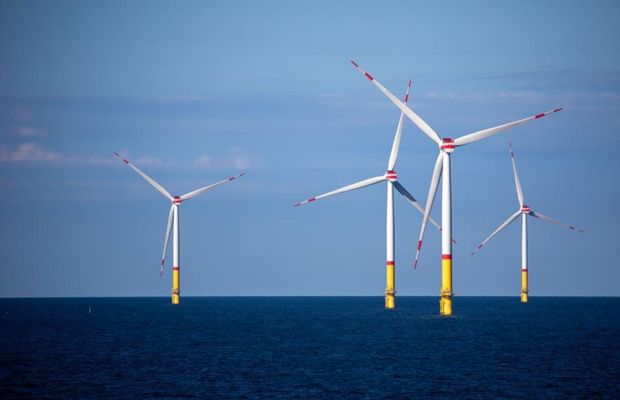Highlights :
- Reasons Oil firms are choosing offshore wind for RE are: Engineering Expertise, Deep Pockets, Huge Growth Potential of Offshore Wind, Reduced Operational Emissions
 Independent Power Provider DNV has been picked by Korea Electric Power Corporation (KEPCO) to help with the development of an offshore power grid plan.
Independent Power Provider DNV has been picked by Korea Electric Power Corporation (KEPCO) to help with the development of an offshore power grid plan. The wind of change from non-renewable to renewable energy sources is driving businesses’ investments toward green energy across the globe. Oil firms are not an exception either. Many of the major oil firms worldwide are choosing to invest in offshore wind as a preferred renewable energy source.
While some industrial leaders – like ConocoPhillips, Shell, and others have been the early proponents of this trend for years, several other major oil companies are taking radical shifts in strategic direction that will transform them over the coming decades. Reportedly, Equinor ASA, Shell Plc, and TotalEnergies SE are considering building what would be the world’s largest floating wind farm off Norway to power their fossil-fuel activities.
The oil firms are set to invest more in wind power than in oil and gas drilling in the North Sea in the years to come, having won rights to develop wind farms off the coast of Scotland. While this has strengthened the spirits, firms like BP were set to spend more on offshore wind than on oil and gas development in the UK, even before the ScotWind round.
Further, to adapt to changing times, oil companies need to shift their dependencies on electricity for drilling rigs from conventional sources to renewable sources. “Oil majors that want to reduce their carbon footprint will have to shift their activities to energy basins where drilling rigs can be powered by renewables and which have ample space for carbon sequestration”, said Andrew Latham, President at Wood Mackenzie.
Why Do Oil Firms Favour Offshore Wind For RE?
Offshore wind farms are one of the fastest-growing sectors of renewable energy. As per estimates, the industry may attract about $1 trillion in investment over the next decade. They are becoming the preferred renewable energy source for oil firms looking to reduce operational emissions from offshore oil and gas fields. There are various reasons, such as reaching emission targets can compel companies to take the most feasible set of measures to contribute towards a fight against climate change. Many European oil majors have their net-zero goals set to be achieved by 2050. They require a shift to renewable that is most feasible without affecting the firm’s operational performance at an optimum level. Offshore wind energy is the sector which many in the industry consider a panacea to this challenge.
The oil firms are hoping for a change from big oil to big energy and expansion in renewable power, by growing themselves in offshore wind. While there are several reasons why oil farms consider offshore wind to be the most viable alternative, here is the list of top 5 reasons why oil firms are choosing offshore wind for renewable energy.
#1 Engineering Expertise
Engineering expertise is one of the main reasons oil firms are choosing offshore wind for renewable energy. The cost of development of offshore wind projects requires technical expertise as building the big infrastructure on the deep ocean surface is challenging. Naturally, oil majors already have very strong experience in developing and managing very large offshore oil and gas projects. For oil firms, it will be like bringing the existing skills from the old world to the new world. Moreover, they know all the ways to bring down the project costs considering existing investments in relevant technologies and research which would otherwise require research and training if they go for any other “new” idea of renewable energy.
#2 Deep Pockets
They are shifting to the offshore wind because they can!
Apart from their offshore expertise in the development of wind farms, they are also financially adequate, which makes it a lot easier for Oil Majors to consider offshore wind farms, considering the industry to be one of the most wealthy sectors. Even the world’s largest offshore wind farms pale in comparison to multibillion-dollar fossil fuel projects in terms of scale and expense. Such projects are a routine for oil majors.
#3 Offshore Wind Sector Has Huge Growth Potential
The growth potential of wind energy is high and the oil firms are keen on investing for considerable future returns. With fossil fuels increasingly being replaced, offshore wind farms will become priced assets for the current oil companies. The industry may attract nearly $1 trillion over the next decade.
The offshore wind capacity may jump over tenfold by 2030, as it expands from 34GW in 2020 to over 330GW by 2030. The governmental policies promoting wind farms as a clean source of energy will play a big part growth of this sector.
#4 Growth of New Technologies
Offshore wind provides avenues for additional growth within emerging new energy technologies. Green Hydrogen, for instance, is one such technology that is in talks. Many oil companies target the technology as well.
The excess offshore wind capacity can now serve as an alternative fuel source for hydrogen electrolysis, versatile energy storage, transmission, and fuel technology that can be used to decarbonize many hard-to-abate industries and applications. Since building electrolysis is capital intensive, companies want to maximize its utilization. Due to its high capacity, offshore wind also supports the same objective. Building on the idea, last year, Denmark approved a project to construct an offshore hub of 10 GW of capacity in the form of an artificial island in the North Sea that, using on-site electrolysers, can store electricity and produce green hydrogen.
#5 Reduced Operational Emissions
The operational requirement of energy depends on fossil fuels in the oil and gas projects. The wind farms will generate electricity which the firm can use to feed the operation. This way, there will be a cost saving as well as a contribution toward emissions reduction as well. More importantly, the firms will also be walking the path towards their net zero or similar targets most efficiently and economically. Many of the oil majors have also set their net zero targets by 2050.






























